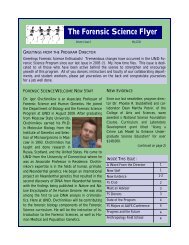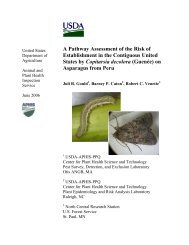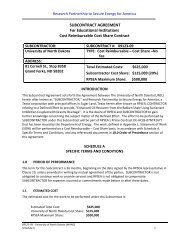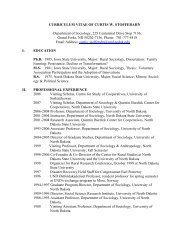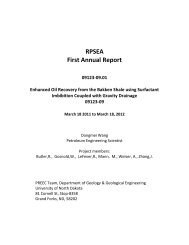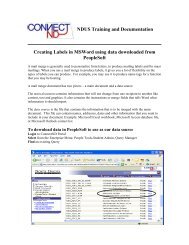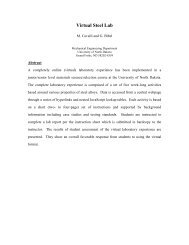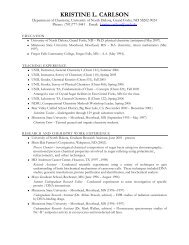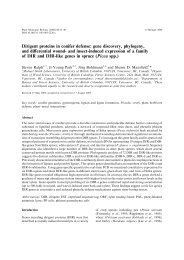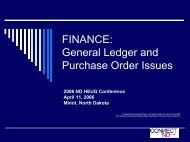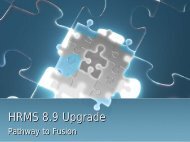You also want an ePaper? Increase the reach of your titles
YUMPU automatically turns print PDFs into web optimized ePapers that Google loves.
43. What type of metamorphic feature is shown in this<br />
photograph?<br />
a) cleavage in slate<br />
b) schistosity<br />
c) hornfels<br />
d) foliation in banded gneiss<br />
e) thrust fault<br />
44. Which of the following matches a sedimentary rock with a possible metamorphic<br />
equivalent?<br />
a) sandstone – greenstone<br />
b) basalt – marble<br />
c) limestone – quartzite<br />
d) shale – slate<br />
e) diatomite – diamond<br />
45. What is true about contact metamorphism?<br />
a) It always involves a magma<br />
b) It generally takes place in the crust<br />
c) It frequently produces unfoliated rocks<br />
d) It may occur at very high temperatures<br />
e) All of the above are correct<br />
46. In what environments does high pressure/low temperature metamorphism occur?<br />
a) near magma but at shallow levels<br />
b) near magma but at deep levels<br />
c) under normal conditions of burial and heating<br />
d) in a subduction zone or accretionary prism<br />
e) none of these<br />
47. What happens when a glacier retreats?<br />
a) ice near the toe of the glacier actually moves uphill<br />
b) melting occurs only above the line and sublimation occurs only below the line<br />
c) ice melts faster than it is replaced by downhill flow<br />
d) crevasses form above the equilibrium line; they fill below the equilibrium line<br />
e) icebergs form and sea level drops






